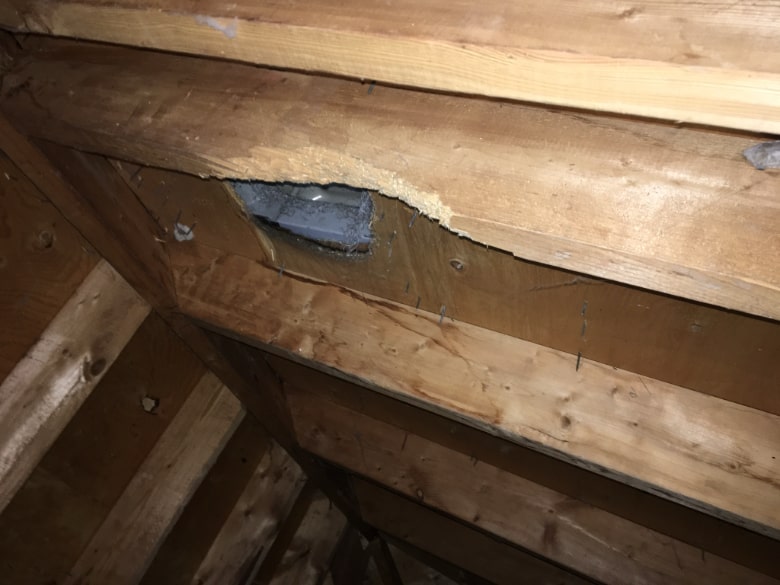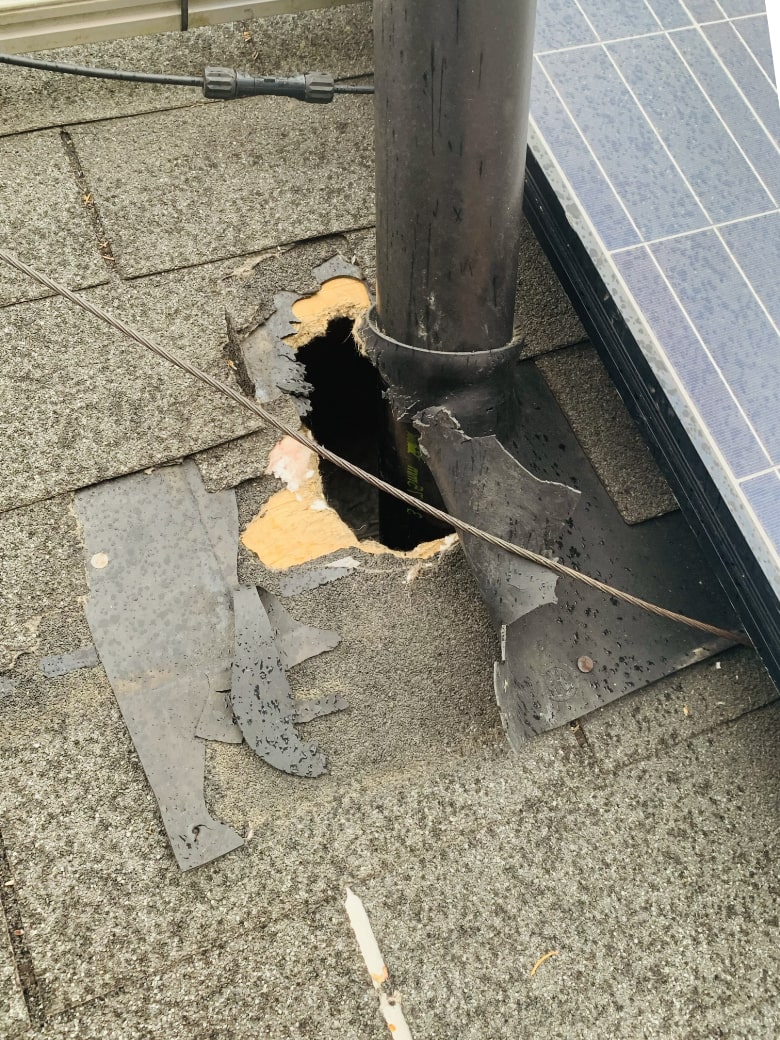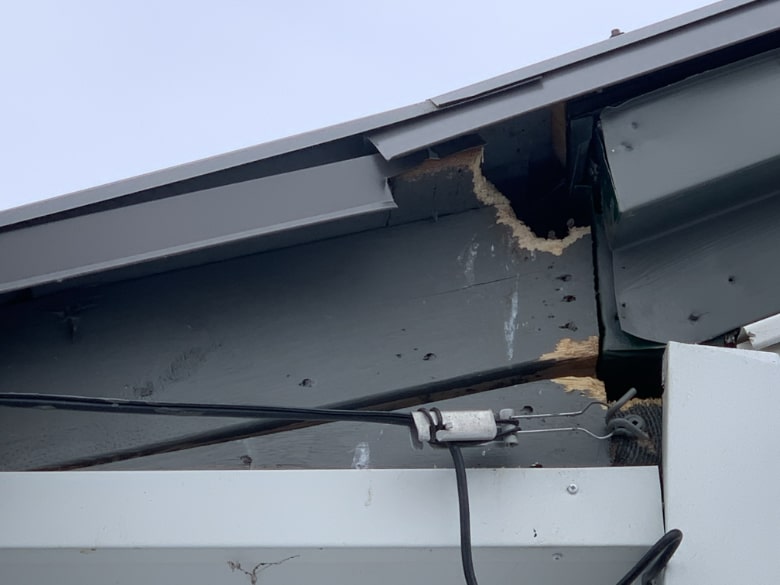
How Are Squirrels Getting Into My Attic and How To Stop Them
Posted by Jared Houliston Friday, September 26th, 2025 | 1,143 Reads
 These are the top 10 areas of the home that squirrels use for entry points. When these areas are properly protected, squirrels and other forms of wildlife are hindered from getting into your home or attic too.
These are the top 10 areas of the home that squirrels use for entry points. When these areas are properly protected, squirrels and other forms of wildlife are hindered from getting into your home or attic too.
If you’re hearing noises above your ceiling or in your walls and believe squirrels are the cause, you’re likely right and you’ll need to call a local squirrel removal company to have them humanely removed.
Squirrels are persistent and once they’re inside, they’ll damage insulation, chew wiring, and create entry points for other wild animals to get in. Having them removed and the entry points sealed up through exclusion is the one way to prevent future break-ins.
The key to stopping squirrel entries is by understanding how they’re getting in and how to block them out for good.
The Top 10 Ways Squirrels Get Into an Attic
Here are the most common ways squirrels get into your home and attic, and what you can do to keep squirrels out of your home permanently:
Roof Vents
Plastic or aluminum roof vents are easy for squirrels to gnaw through. Once they chew through the mesh or pop off the cover, they have direct access into your attic. Because these vents are designed for airflow rather than strength, squirrels use them as one of the easiest ways in.
How to Stop Them
Replace flimsy vent covers with steel mesh or metal guards. Professional-grade vent caps are designed to be squirrel-resistant and still allow airflow. If you’re unable to make these additions, contact your local wildlife management company for assistance.
Gable Vents
 Gable vents are usually made of wood or plastic and are another easy point for squirrels to get in. The slats can be chewed or bent, and squirrels can easily squeeze through the opening.
Gable vents are usually made of wood or plastic and are another easy point for squirrels to get in. The slats can be chewed or bent, and squirrels can easily squeeze through the opening.
Since gable vents sit higher up on the roof than other vents, homeowners usually don’t notice there’s a problem until damage is already done and the squirrel is nesting in the attic.
How to Stop Them
You can reinforce gable vents from the outside by using galvanized hardware cloth. Just make sure it’s securely fastened so squirrels can’t pry it loose.
Roof Edges and Fascia Gaps
Any gaps where the roof meets the fascia board is a potential squirrel entry point. These gaps are caused by water damage or poor construction which leaves small openings that a squirrel can easily widen.
These edge gaps give squirrels a direct path to the inside of your attic without too much resistance especially if the wood is already soft or rotting.
How to Stop Them
You can install drip edge flashing along the entire roofline. Drip edge creates a strong sealed barrier that blocks wildlife entry and prevents water damage at the same time. Drip edge is an effective permanent fix when installed properly. You local wildlife removal company or roofing company can install drip edge for you.
Soffits
The roof soffit is made of light material like aluminum or vinyl. Squirrels can easily claw their way in, especially at the corners or where the soffit meets the roofline. Once squirrels get in though this area, they have full access to the attic because soffits usually run the length of the roofline.
How to Stop Them
Inspect your soffits for sagging or broken sections. If you see sagging or damage, it could be a sign that a squirrel or raccoon has broke into your attic.
Just replace damaged soffits and install metal reinforcements in high-risk areas like junctions and overhangs.
Chimneys
An uncapped chimney is one of the easiest way for squirrels to entry your home. When they do, they nest near the flue and can cause blockages and fire hazards.
A chimney also provides warmth and shelter for squirrels which makes a chimney a prime nesting spot for females looking to raise their young.
How to Stop Them
Cap your chimney with a heavy-duty squirrel-proof chimney cap and avoid mesh that can be chewed through or pulled off.
Outdoor Wall Vents (Dryer, Bathroom, Kitchen)
Squirrels will use exterior wall vents to access wall cavities and climb upward to attic spaces. These vents are usually covered by flimsy plastic flaps and because they lead directly indoors, squirrels exploit them a lot to avoid predators and detection while moving in and out of a home.
How to Stop Them
Swap your existing vent covers with tamper-proof louvered metal versions. Also use screws instead of clips to hold them in place.
Plumbing Vent Pipes
 These are small pipes that have rubber boots around them. With some persistence, squirrels can chew through the boot and widen the gap. These vents are warm and attracts squirrels who are looking for warmth during colder months.
These are small pipes that have rubber boots around them. With some persistence, squirrels can chew through the boot and widen the gap. These vents are warm and attracts squirrels who are looking for warmth during colder months.
How to Stop Them
Just install metal guards designed for plumbing stacks. These guards prevent animal intrusions without blocking the pipe’s natural airflow.
Eavestroughs and Overhangs
Squirrels will always take advantage of broken or rotten wood that’s around the eavestroughs and roof overhangs. These areas are already generally weak points structurally and squirrels can easily gnaw through soft wood to make a large opening into the attic.
How to Stop Them
Replace any soft or chewed wood and paint or seal new wood to protect it. Trim the branches that may be hanging over the roof by at least 6 to 8 feet to remove easy access routes.
Gaps Behind Gutters
Another potential opening is the space behind a sagging gutter where squirrels can get into the soffit and then into the attic. These gaps are not easy to find by homeowners and gives squirrels a hidden access point to return to again and again.
How to Stop Them
Make sure your gutters are firmly secured to the fascia. If they are not, install gutter guards that double as a barrier or seal gaps with flashing and metal mesh.
Existing Wildlife Entry Holes
 If another animal like a raccoon has already broken into your attic, squirrels will use that same hole. It’s also not hard for them to find these entries because they can follow them scent of the other animal that’s already inside.
If another animal like a raccoon has already broken into your attic, squirrels will use that same hole. It’s also not hard for them to find these entries because they can follow them scent of the other animal that’s already inside.
How to Stop Them
You can do a perimeter search of the outside of your home and look for existing holes, but if you do find any, it’s important to call a professional wildlife removal company because there could be babies in the home that need to be removed first.
Pro Tip: Don’t rely on foam, wood, or plastic equipment to seal entry points because squirrels will chew right through them to get back in.
A Few Quick Entry Prevention Tips
Even though you should have a professional seal active entry points, here are a few quick tips to reduce the risk of squirrel intrusion:
- Trim back nearby trees so overhanging branches can’t act as launch pads to your roof.
- Avoid putting out bird feeders that attract squirrels and bring them closer to your home.
- Listen early because scratching, rolling, or thumping sounds in the attic are usually the first warning signs of a problem.
- Keep eavestroughs clean and in good repair so they don’t sag and create hidden gaps squirrels can exploit.
- Inspect your roofline and siding regularly for soft wood, cracks, or loose panels that could be chewed open.
- Store pet food, bird seed, and garbage in sealed containers to avoid attracting squirrels close to the house.
- Install a chimney cap if you don’t already have one, since an open chimney is a direct entry point.
Squirrels don’t give up easily and if they’ve found a way into your attic once, they’ll try again unless it’s completely sealed off. The best long-term solution is to have the entry points professionally sealed and to install prevention measures. That’s why professional wildlife removal services usually come with a multi-year guarantee.
Ontario Wildlife Removal Inc. provides wildlife removal and pest control in Southwestern Ontario, including Brantford, Kitchener-Waterloo, Cambridge, Guelph, London, Woodstock, Tillsonburg, Simcoe, Port Dover, Paris, St. George, Six Nations, Caledonia, Burlington, Waterdown, Oakville, Hamilton, Stoney Creek, Grimsby, & Niagara Region. Our methods are safe, humane and environmentally friendly. Call today to book your inspection.






Leave a Reply